If devotees cannot go to the temple, the temple goes to devotees ! This is what happened at Krishna Raja Sagara. The 12th century Venugopala Swamy Temple, which remained submerged when the KRS was full and resurfaced when the water level reached an all time low, was shifted to the nearby Hosa Kannambadi village, thanks to liquor baron and philanthropist late Sri Hari Khoday who took up this gigantic task as a Khoday Foundation Project. Today, the temple, which is waiting for inauguration, has become a major tourist attraction. This Weekend Star Supplement throws light on the relocated ancient marvel.
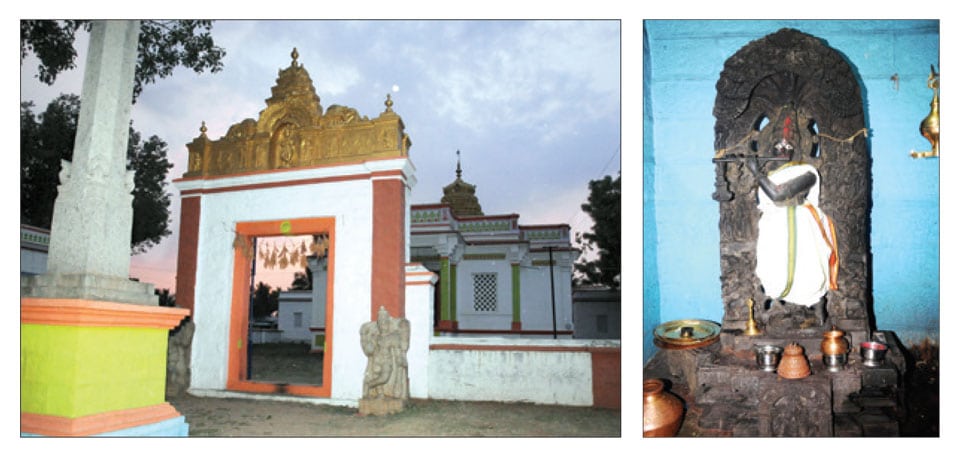
Sri Venugopala Swamy Temple built by Nalwadi Krishnaraja Wadiyar during the construction of KRS Dam in 1911. Picture right shows the idol of Lord Venugopala Swamy originally installed by Hoysala Kings.
Submerged temple becomes a living monument
One of the most prominent and emerging tourist spots near Mysuru is the Venugopala Swamy Temple at Hosa Kannambadi, near Krishna Raja Sagara Dam.
The temple is said to be built at the same time when Channakeshava Temple was constructed at Somanathapura by Hoysala rulers during 12th century. Earlier, the temple was located at Kannambadi village. But with the construction of KRS Dam, the entire village of Kannambadi submerged, including the temple structure. At this time, the then King Nalwadi Krishnaraja Wadiyar ordered for the construction of the new village which was named Hosa Kannambadi.
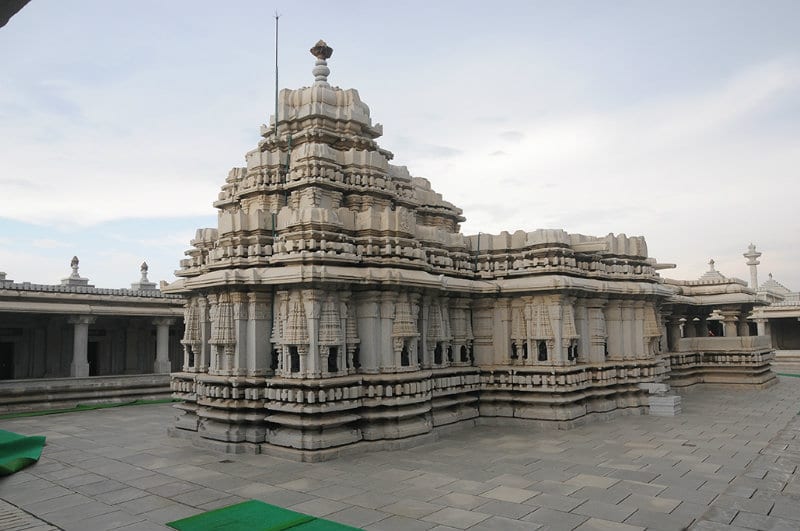
A backside view of the Venugopala Swamy Temple.
There were a couple of temples at Kannambadi village, about a dozen miles from Mysore, when Sir M. Visvesvaraya planned the KRS reservoir, as the Chief Engineer of Nalwadi Krishnaraja Wadiyar in 1909. When the project was completed across a lake there by 1930, three major temples of Kannambadi village submerged in the reservoir waters. While one was an Eshwara Temple, the other major one was the Venugopala Swamy Temple. The third one was a small one dedicated to Kalamma, a local deity.
The main idol of Venugopala Swamy, Lord Krishna playing the flute as a cow-herd, was also shifted to a new temple premises in the rehabilitated village. The Eshwara temple is deep inside the waters and visible only when the waters recede rarely to the lowest level of 35 feet. The 700-year-old Venugopala Swamy Temple, however, showed up almost every year due to inadequate rainfall.
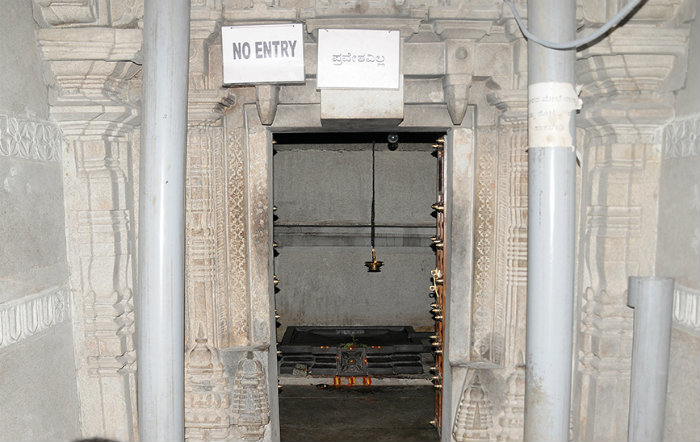
Sanctum Sanctorum of Venugopala Swamy Temple.
Originally, the temple complex was huge with an area of 50 acres. It had two ‘prakaras’, outer gate, verandas on sides, yagashala and kitchen. This was enclosed by second mahadwara, which led to the inner enclosure. Adding to this was the sanctum sanctorum, an entrance hall, a middle hall and the main mantap. The cell opposite the entrance had a figure of Keshava (Krishna) and the south cell, containing the figure of Gopalakrishna, was added later.
The construction of the KRS Dam began in 1909 and by 1930, the entire Kannambadi village was submerged. It was during 2000 that the temple resurfaced when water levels in the reservoir dropped. Though the temple was underwater for around 70 years, it remained intact.
Seeing the architectural beauty of the temple, Khoday Foundation, under the guidance of Sri Hari Khoday, relocated the building block-by-block at a cost of Rs. 2.5 crore. More than 200 workers and machines removed the carved stones and pillars of the temple, after marking each one of them. Initially, it was decided that the temple would be located to Madhuvana Park in Mysuru but protests from Kannambadi villagers forced the Foundation to the relocate the temple to a place near Hosa Kannambadi village.
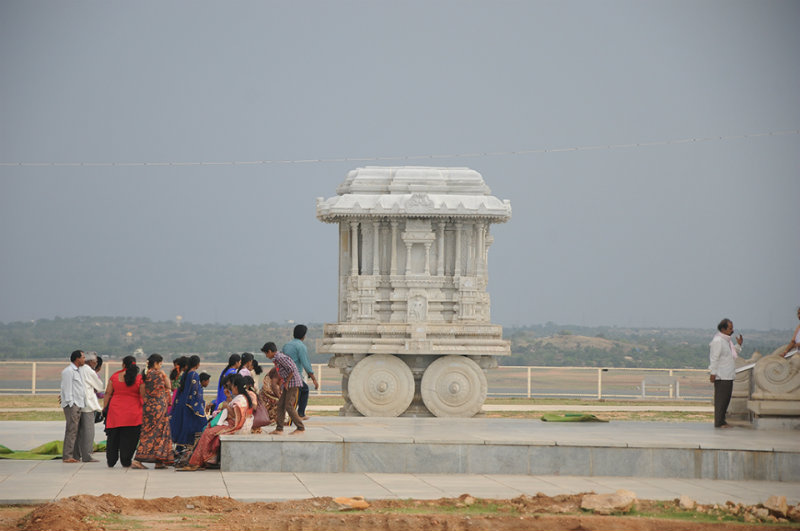
A stone chariot installed towards the left side of the temple.
The new location of the temple is about one kilometre to the north of the original site where the backwaters would touch the outer walls of the temple if KRS water level touches 124.80 ft, its maximum capacity. The relocated temple is located around 9 km by road from Brindavan Gardens. It is around 30 km from Mysuru.
The relocated temple is in the original shape and design and the design was computerised and each stone was identified with numbers for relocating them in the same architectural style. The in-house architects of the Khoday Foundation had videographed the original temple, took over 16,000 photographs and marked each and every slab used in the construction. Each and every stone was numbered, removed and relocated at Hosa Kannambadi by trained artisans and sculptors and a few experts who were brought in from Tamil Nadu.
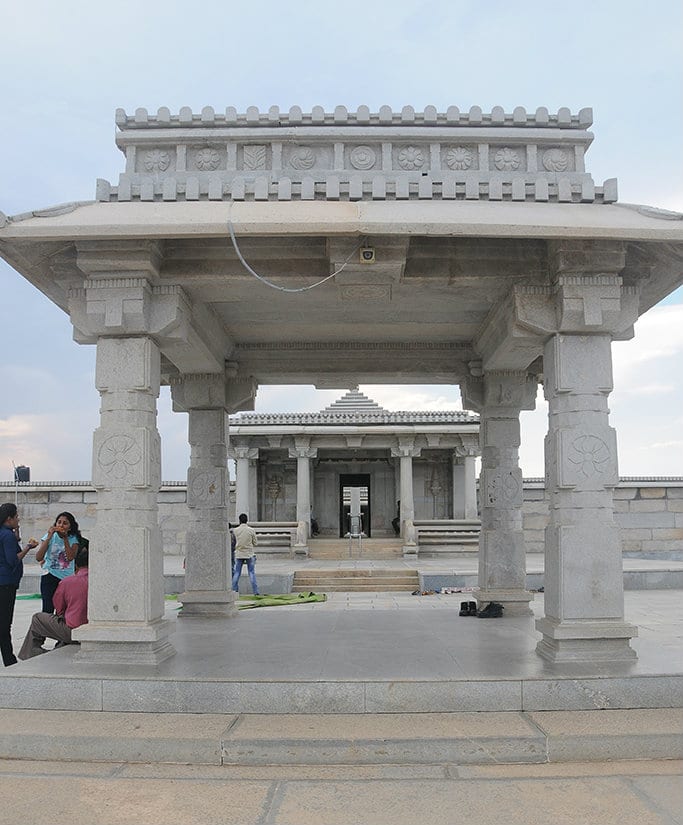
Entrance of the temple through the main gate.
While some stones from the original temple were retained, old and worn-out stones have been replaced with new ones. The sanctum sanctorum has been retained and refurbished and new polished stones have been added.
The restoration and relocation began in May 2003 and was completed in 2011. However, the temple has been waiting for official inauguration as the main idol of Venugopala Swamy, the presiding deity, is yet to be installed. Sources said that idol, resembling the original statue, was ready to be installed and the inauguration dates have to be finalised.
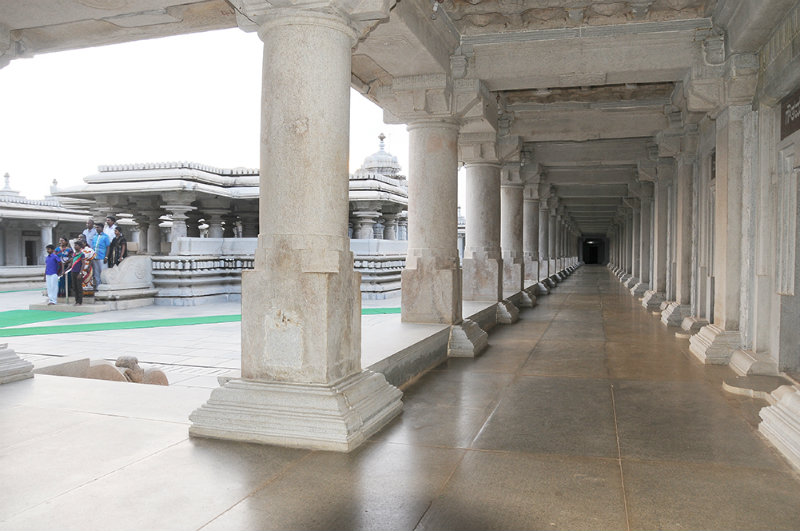
One of the corridors inside the temple.
The temple is open for public from morning till evening. One visit to the temple, people can enjoy the architectural splendour with family and friends. People can also enjoy visiting other tourist spots near the Venugopala Swamy Temple which includes the KRS Dam, Brindavan Garden, Blue Lagoon (located in KRS backwaters), Srirangapatna (which is nearly 14 km from KRS) and of course Mysuru.
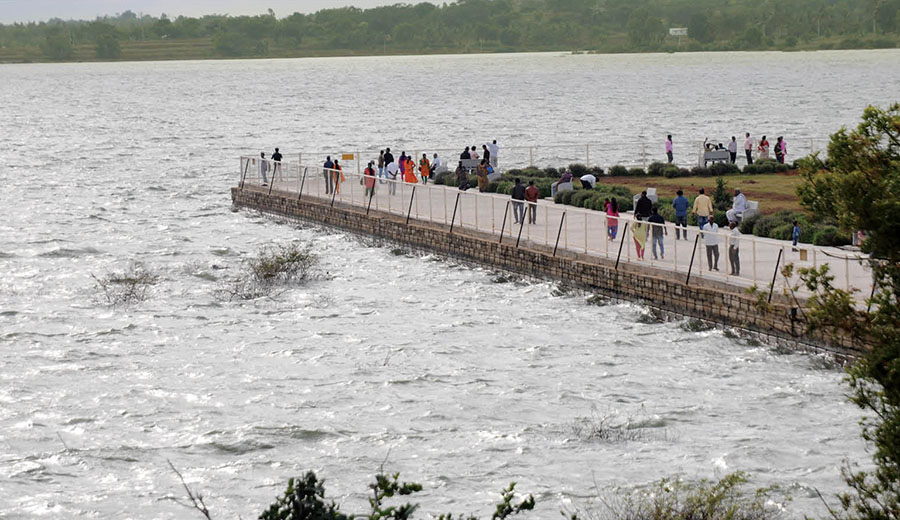
Beauty lies in the eyes of the beholder: Tourists enjoying the cool breeze and the waves at KRS backwaters last evening.
This apart, visitors, especially those who like to relish river fish and crab can tickle their taste buds with mouth-watering fresh fish delicacies which are served at KRS and surrounding areas. Visitors can also stay overnight at KRS as there are lot of hotels and resorts nearby. Regular transport is available till KRS and visitors can hire local transport to reach the Venugopala Swamy temple.
– BCT&VNS
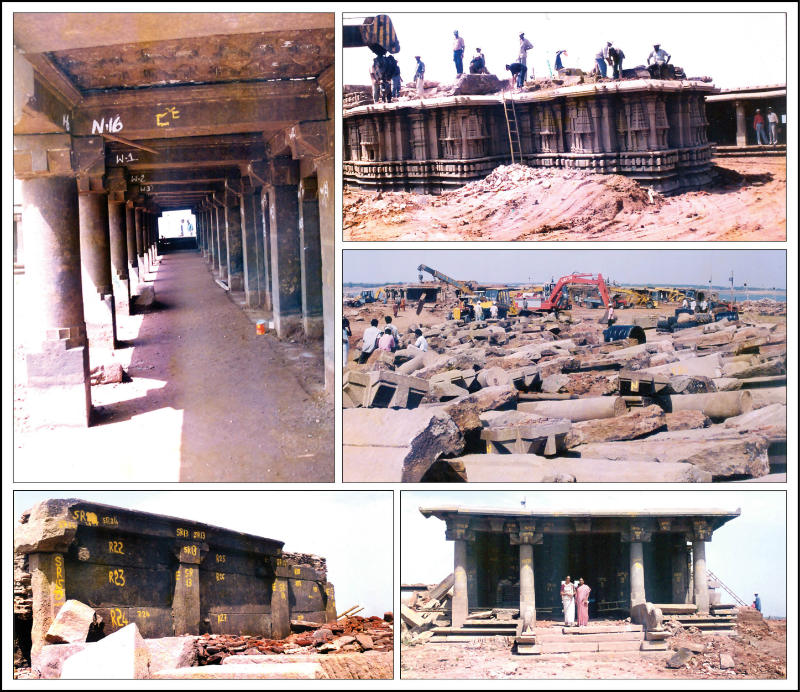
This is how Venugopala Swamy Temple was relocated from Kannambadi.
When Kanchi Swamiji’s prediction came true
Kanchi Swamiji Jayendra Saraswathi had predicted that Khoday family would be “getting a temple”. The seer had told this to Khoday family head Ramachandra Khoday around 30 years back. This was disclosed to Star of Mysore by late Sri Hari Khoday during May, 2003 when he had then kick-started the relocation of the temple. He said, “When told about the temple, I could not be¬lieve. But now I strongly believe that Seers will not predict without proper reasons.”
At the time of shifting, the temple had several dam¬ages and some stones were broken. Following this, new stones were added during restoration works. The Khoday Foundation had summoned sculptors from Tamil Nadu to carve the stones. Muniswamy Muthu, Chief Sculptor from Tiruchirapalli supervised the entire project.
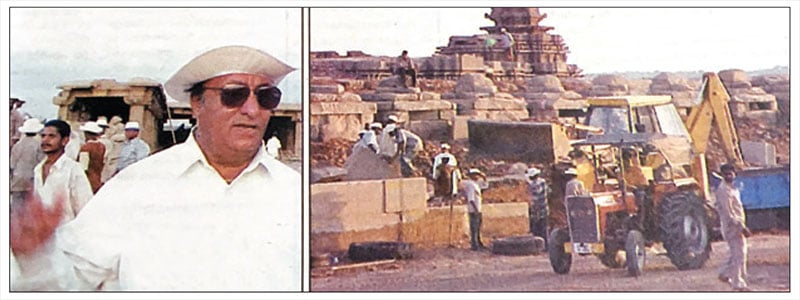
A file photo of philanthropist Sri Hari Khoday kick-starting the relocation works of Venugopala Swamy Temple at Kannambadi Village during May, 2003.
The idol of Lord Venugopala Swamy was removed from the temple and was reinstalled at the new temple built in Hosa Kannambadi. The villagers said that the then King Nalwadi Krishnaraja Wadiyar shifted the idol at the time when the dam was being constructed during 1911. They added that the idol installed at the temple will remain as is and the new temple will have a new idol.



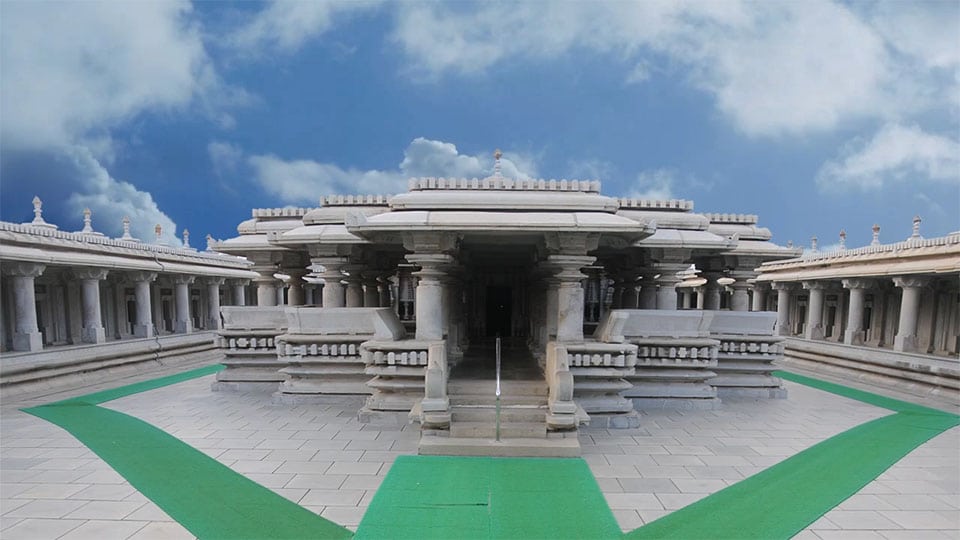




Recent Comments